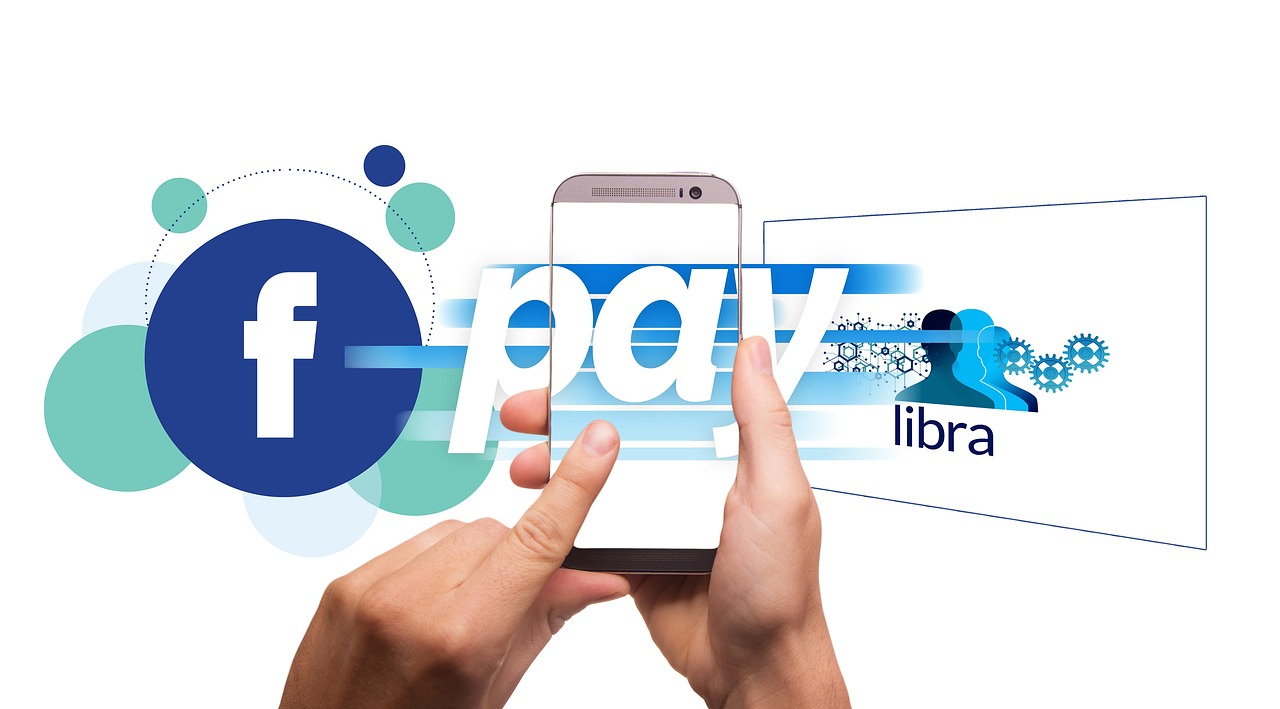The Future of Digital Identity Solutions with Blockchain
In today's fast-paced digital world, the way we manage our identities is undergoing a seismic shift, thanks to the revolutionary technology known as blockchain. This article explores how blockchain technology is reshaping digital identity solutions, enhancing security, privacy, and user control while addressing challenges and future trends in this evolving landscape. Imagine a world where your personal data is no longer at the mercy of centralized authorities, where you have the power to control who sees your information and when. Sounds appealing, right? Well, that future is closer than you might think!
Digital identity encompasses the online representation of individuals, organizations, and devices. It's more than just a username and password; it includes your social media profiles, online banking accounts, and even your digital footprints left behind on various platforms. In a world that's increasingly interconnected, maintaining a secure and reliable digital identity has never been more crucial. However, the challenges are numerous. From data breaches to identity theft, the threats are real and ever-present. How can we ensure our digital selves are protected?
Enter blockchain technology, a decentralized framework that provides a robust solution for managing digital identities. Unlike traditional databases that are vulnerable to hacks and unauthorized access, blockchain offers key features like immutability and transparency. These characteristics enhance security and build trust in digital identity solutions. With blockchain, once your information is recorded, it cannot be altered or deleted without consensus from the network. This creates a permanent, tamper-proof record of your identity, providing peace of mind in an age where data privacy is paramount.
One of the most empowering aspects of blockchain technology is its decentralization. This means that individuals have control over their personal data, eliminating the need to rely on centralized authorities that have historically mishandled sensitive information. Imagine being the gatekeeper of your own identity, deciding who gets access to your data and for what purpose. This shift not only reduces the risk of data breaches but also fosters a sense of ownership and responsibility among users. However, this newfound power comes with its own set of challenges.
User control over digital identities fosters trust and privacy. With blockchain, individuals can selectively share information, minimizing their exposure to identity theft and unauthorized access. For example, when applying for a job, you can choose to share only specific credentials without revealing your entire digital identity. This level of control is revolutionary, allowing users to navigate the digital landscape with confidence.
While decentralization offers numerous benefits, it also presents challenges. User education is paramount; many individuals may not fully understand how to manage their digital identities on a blockchain. Additionally, technology adoption can be slow, particularly among those who are less tech-savvy. Addressing these hurdles is essential for the effective implementation of blockchain-based identity solutions. Solutions might include user-friendly interfaces and educational programs to help individuals navigate this new landscape.
Another exciting aspect of blockchain technology is the use of smart contracts for identity verification. Smart contracts are self-executing contracts with the terms of the agreement directly written into code. They automate identity verification processes, streamlining transactions and enhancing security. By reducing the need for intermediaries, smart contracts not only speed up processes but also minimize the potential for fraud. Imagine applying for a loan and having your identity verified in seconds without the hassle of paperwork or waiting for approvals!
As we delve deeper into digital identity solutions, privacy and security become paramount. Blockchain enhances data protection by encrypting personal information and storing it across a decentralized network. This makes it incredibly difficult for hackers to access sensitive data. However, with great power comes great responsibility. Organizations must ensure that they comply with regulations like the General Data Protection Regulation (GDPR) while maintaining user privacy and data integrity. This balancing act is essential for building trust in blockchain-based identity solutions.
Compliance with regulations like GDPR is crucial for digital identity solutions. Blockchain can help organizations meet legal requirements while still preserving user privacy. By providing users with control over their data, organizations can demonstrate compliance transparently, fostering trust and encouraging wider adoption of blockchain technology.
The future of digital identity solutions is shaped by emerging trends such as biometrics and AI integration. These technologies promise to further enhance blockchain-based identity management systems. Imagine using your fingerprint or facial recognition to access your digital identity securely. This not only adds an extra layer of security but also simplifies the user experience. As we embrace these advancements, the potential for more secure, user-friendly digital identity solutions is limitless.
- What is digital identity?
Digital identity refers to the online representation of individuals, including their personal information, social media profiles, and online transactions. - How does blockchain enhance digital identity?
Blockchain enhances digital identity by providing a decentralized, secure, and transparent framework for managing personal data. - What are smart contracts?
Smart contracts are self-executing contracts with the terms directly written into code, automating processes like identity verification. - What are the challenges of decentralization?
Challenges include user education, technology adoption, and ensuring compliance with regulations. - What future trends should we expect?
Expect to see increased use of biometrics and AI integration in digital identity solutions, enhancing security and user experience.

Understanding Digital Identity
In today's hyper-connected world, digital identity has become an essential concept that represents the online persona of individuals, organizations, and devices. Essentially, it encompasses various elements such as usernames, passwords, biometrics, and even social media profiles, all of which contribute to how we present ourselves in the digital realm. Have you ever thought about how much of your life is encapsulated in your digital identity? From your online banking details to your social media interactions, these components create a complex web that defines who you are online.
Digital identity is not just a mere collection of data; it plays a critical role in our daily lives, influencing everything from online transactions to social interactions. As we increasingly rely on digital platforms for communication, shopping, and even healthcare, maintaining a secure and reliable digital identity has never been more crucial. However, the challenges are significant. Cybersecurity threats, data breaches, and identity theft are rampant, making it imperative for individuals and organizations to prioritize digital identity management.
One of the main challenges in managing digital identity is ensuring security and privacy. With so much personal information available online, how can we trust that our data is safe? The answer lies in understanding the components of digital identity and the systems in place to protect it. For instance, when you enter your credit card information on a website, you expect that the site uses encryption to secure your data. However, not all platforms adhere to the same security standards, and this inconsistency can lead to vulnerabilities.
Moreover, the importance of digital identity extends beyond individual users. Organizations must also manage their digital identities effectively to maintain a trustworthy reputation. A company's digital identity is often reflected in its online presence, including its website, social media accounts, and customer reviews. Poor management of these elements can result in lost business and damaged credibility. Therefore, understanding the intricacies of digital identity is crucial for both individuals and organizations.
To illustrate the various components of digital identity, consider the following table:
| Component | Description |
|---|---|
| Usernames | Unique identifiers for accounts on various platforms. |
| Passwords | Secret phrases used to secure accounts. |
| Biometrics | Physical traits such as fingerprints or facial recognition used for authentication. |
| Social Media Profiles | Online representations of individuals or organizations on platforms like Facebook, Twitter, etc. |
As we navigate this complex landscape, it’s essential to recognize that our digital identities are not static; they evolve as we engage with different platforms and services. This fluidity presents both opportunities and challenges. For instance, while it allows for personalization and tailored experiences, it also raises concerns about data ownership and control. Are we truly in charge of our digital identities, or are we merely pawns in a larger game played by corporations and governments?
In conclusion, understanding digital identity is not just about knowing what it is; it's about recognizing its significance in our lives and the potential risks involved. As we move forward, we must advocate for better digital identity solutions that prioritize security, privacy, and user control. After all, your digital identity is a reflection of you, and it deserves to be protected.

The Role of Blockchain Technology
Blockchain technology is revolutionizing the way we perceive and manage digital identities. At its core, blockchain serves as a decentralized ledger that records transactions across many computers in such a way that the registered transactions cannot be altered retroactively. This fundamental characteristic of immutability ensures that once data is entered into the blockchain, it remains secure and unchangeable, which is a game changer for digital identity management.
One of the standout features of blockchain is its transparency. Every transaction is recorded on a public ledger, visible to all participants in the network. This transparency fosters a new level of trust among users, as it allows individuals and organizations to verify identities without needing a central authority. Imagine a world where you can confirm someone's identity with just a glance at a digital ledger, eliminating the need for cumbersome paperwork and endless waiting times. This is the future that blockchain promises.
In addition to these features, blockchain technology empowers users by providing them with decentralization. Unlike traditional identity management systems that rely on centralized databases, blockchain allows individuals to control their own identity data. Users can manage their digital identities directly, deciding what information to share and with whom. This shift not only reduces the risk of data breaches but also enhances user autonomy. Think of it as having a digital vault where you keep your personal information, and you have the only key!
However, with great power comes great responsibility. While decentralization offers users more control, it also places the onus of security on them. Users need to be educated about how to manage their identities and protect their data effectively. For instance, the use of private keys to access one's identity on the blockchain can be daunting for many. It’s akin to having a safe deposit box; if you lose the key, you lose access to your valuables. Therefore, while blockchain presents a promising solution, user education and support systems are crucial for its successful implementation.
To illustrate the role of blockchain in digital identity management, consider the following table that summarizes its key features and benefits:
| Feature | Description | Benefits |
|---|---|---|
| Immutability | Data cannot be altered once recorded | Enhances security and trust |
| Transparency | All transactions are visible on a public ledger | Builds trust and accountability |
| Decentralization | No central authority controls the data | Gives users control over their identity |
In conclusion, blockchain technology is not just a buzzword; it's a transformative force in the realm of digital identity solutions. By leveraging its unique features, we can create a more secure, transparent, and user-centric approach to identity management. Yet, as we embrace this new technology, we must remain vigilant about the challenges it presents, particularly regarding user education and the need for robust support systems to ensure everyone can take full advantage of what blockchain has to offer.

Decentralization and Control
In a world where data breaches and privacy concerns have become commonplace, the concept of decentralization emerges as a beacon of hope for individuals seeking more control over their digital identities. Imagine a scenario where you, and only you, have the keys to your personal information. This is the promise of blockchain technology. By distributing the power away from centralized authorities, blockchain allows individuals to manage their identities with unprecedented autonomy. No longer do you have to rely on banks, social media platforms, or government agencies to authenticate your identity; the authority is handed back to you.
One of the most significant advantages of this decentralization is the reduction of risk associated with data breaches. When your information is stored in a centralized database, it becomes a prime target for hackers. However, with blockchain, your data is fragmented and distributed across a network of computers. This means that even if one node is compromised, your personal information remains secure. It’s like having a treasure chest locked away in multiple locations; even if one lock is picked, the treasure is still safe in the others.
Moreover, the control that comes with decentralization isn’t just about security; it’s also about empowerment. You can choose what information to share, with whom, and for how long. For example, if you’re applying for a job, you can provide your potential employer with access to your verified credentials without revealing unnecessary personal details. This selective sharing minimizes the risk of identity theft and enhances your overall privacy.
However, it’s essential to acknowledge that decentralization is not without its challenges. The shift from a centralized to a decentralized model requires a significant change in mindset and behavior. Users must understand how to manage their digital identities effectively, which can be daunting for those unfamiliar with blockchain technology. Education and user-friendly interfaces will be crucial in facilitating this transition. Here are a few critical considerations:
- User Education: Individuals need to be informed about how to use blockchain for identity management. This includes understanding wallets, private keys, and how to securely share information.
- Technology Adoption: For decentralization to work, widespread adoption of blockchain solutions is necessary. This requires collaboration between tech companies, governments, and educational institutions.
In conclusion, the decentralization of digital identity through blockchain technology represents a revolutionary shift in how we think about personal data. It not only enhances security but also empowers individuals to take charge of their identities, paving the way for a future where privacy and control are paramount. As we move forward, the challenge lies in overcoming the barriers to adoption and ensuring that everyone can benefit from this transformative technology.
- What is decentralization in digital identity?
Decentralization in digital identity refers to the distribution of control over personal data from centralized authorities to individuals, allowing them to manage their identities securely. - How does blockchain enhance security in digital identity?
Blockchain enhances security by storing data across a distributed network, making it harder for hackers to access all information at once. - What are the challenges of decentralized identity management?
Challenges include user education, technology adoption, and the need for user-friendly interfaces to facilitate the transition.

Benefits of User Control
The concept of user control in digital identity management is not just a buzzword; it's a transformative approach that empowers individuals in a world increasingly dominated by data breaches and privacy concerns. Imagine having the ability to dictate who sees your information and when they see it. With blockchain technology, this is becoming a reality. Users can take charge of their digital identities, ensuring that they maintain ownership and control over their personal data.
One of the most significant benefits of user control is the enhanced trust it fosters between users and service providers. When individuals know they have the power to manage their own identities, it naturally leads to a greater sense of security. They can decide to share specific pieces of information with different entities, minimizing the risk of identity theft and unauthorized access. For example, instead of providing a full name, address, or social security number, users can choose to share only the necessary data required for a particular transaction.
Moreover, this selective sharing of information can significantly reduce the chances of data misuse. Users can engage in transactions without exposing themselves to unnecessary risks. In a world where personal data is often treated as a commodity, having control means that individuals can protect their privacy more effectively. They can also revoke access to their information at any time, which is a powerful feature that traditional systems often lack.
Another noteworthy aspect of user control is the potential for enhanced privacy. With blockchain, users can utilize cryptographic techniques to secure their data. This means that even if data is shared, it remains encrypted and inaccessible to unauthorized parties. The transparency of blockchain also allows users to track how their information is being used, providing an added layer of accountability for organizations that handle personal data.
To illustrate the benefits further, consider the following table that outlines the advantages of user control in digital identity management:
| Benefit | Description |
|---|---|
| Enhanced Trust | Users feel more secure knowing they control their data. |
| Selective Sharing | Individuals can choose what information to share, reducing exposure. |
| Improved Privacy | Data is encrypted, ensuring that only authorized parties can access it. |
| Accountability | Users can track how their information is being utilized. |
In essence, user control transforms the way we think about digital identities. It shifts the power back to the individual, allowing them to navigate the digital landscape with confidence. As we continue to embrace blockchain technology, the importance of user control will only grow, paving the way for a more secure and privacy-centric digital future.
- What is user control in digital identity? User control refers to the ability of individuals to manage their personal data and decide who can access it.
- How does blockchain enhance user control? Blockchain allows users to securely store their identity information and share it selectively, minimizing risks associated with data breaches.
- Can users revoke access to their data? Yes, users can revoke access to their information at any time, providing them with ongoing control over their digital identity.

Challenges of Decentralization
While the concept of decentralization in digital identity solutions offers a plethora of benefits, it is not without its challenges. One of the primary hurdles is user education. Many individuals are still unfamiliar with blockchain technology and how it operates. This lack of understanding can lead to hesitance in adopting decentralized identity solutions, as users may feel overwhelmed by the technical jargon and the complexities involved. Just imagine trying to convince someone to switch from a familiar bank to a digital wallet without them fully grasping how it works. It’s like asking someone to jump into the deep end of a pool without knowing how to swim!
Another significant challenge is the technology adoption rate. While blockchain has made great strides, many organizations still rely on traditional systems for identity management. Transitioning to a decentralized framework requires not only technological upgrades but also a shift in mindset. Organizations need to invest in infrastructure and training, which can be daunting, especially for smaller businesses with limited resources.
Furthermore, there are concerns regarding interoperability. Different blockchain networks may not communicate seamlessly with one another, which could hinder the effectiveness of decentralized identity solutions. If you think about it, it’s akin to trying to connect a USB device to a device that only supports HDMI; they simply don't work together. This lack of interoperability can lead to fragmented systems that fail to deliver the promised benefits of decentralization.
Lastly, there are regulatory concerns. As governments and regulatory bodies begin to take notice of blockchain technology, the landscape is likely to evolve. Organizations must navigate a complex web of regulations that may not yet have clear guidelines on decentralized identity solutions. This uncertainty can deter companies from fully investing in and implementing these technologies, as they may fear running afoul of the law.
In summary, while decentralization in digital identity solutions presents exciting opportunities, it also comes with its own set of challenges. Addressing these issues through education, investment in technology, ensuring interoperability, and staying compliant with regulations will be crucial for the successful implementation of decentralized identity systems.
- What is decentralized identity? Decentralized identity refers to a digital identity management system that allows individuals to control their personal data without relying on a central authority.
- How does blockchain enhance security in digital identity? Blockchain provides a secure and immutable ledger for storing identity information, making it difficult for unauthorized parties to alter or access personal data.
- What are smart contracts? Smart contracts are self-executing contracts with the terms of the agreement directly written into code, which can automate identity verification processes.
- Why is user education important in decentralized identity? User education is crucial as it helps individuals understand how to manage their identities securely and confidently in a decentralized environment.
- What role do regulations play in digital identity solutions? Regulations ensure that digital identity solutions comply with legal standards, protecting user privacy and data integrity.

Smart Contracts and Identity Verification
In the realm of digital identity, smart contracts are revolutionizing the way we verify identities online. Imagine a world where identity verification is as seamless as sending a text message; that's the promise smart contracts hold. By leveraging blockchain technology, these self-executing contracts automate and streamline the verification process, reducing the need for cumbersome paperwork and third-party intermediaries.
So, how exactly do smart contracts enhance identity verification? First, they provide a level of security that traditional methods simply cannot match. Each smart contract is stored on the blockchain, ensuring that once it's created, it cannot be altered or tampered with. This immutability means that the data contained within these contracts is both secure and trustworthy. For instance, if you were to verify your identity for a new bank account, a smart contract could ensure that your information is only shared with authorized parties, minimizing the risk of data breaches.
Moreover, the efficiency of smart contracts cannot be overstated. They operate on a set of predetermined rules, executing actions automatically when conditions are met. This means that identity verification can occur in real-time, drastically reducing wait times. For example, when applying for a loan, a smart contract can instantly verify your identity and creditworthiness without the need for human intervention. This not only speeds up the process but also enhances the user experience, making it far more convenient.
However, while smart contracts offer incredible advantages, they also come with their own set of challenges. User education is paramount; understanding how to interact with these contracts is essential for widespread adoption. Additionally, there’s the issue of scalability. As more users begin to rely on smart contracts for identity verification, the underlying blockchain must be able to handle the increased load without compromising speed or efficiency.
To address these challenges, organizations are investing in user-friendly interfaces and educational resources that demystify smart contracts. Furthermore, advancements in blockchain technology are paving the way for more scalable solutions that can accommodate a growing user base. As these hurdles are overcome, the potential for smart contracts in identity verification will only continue to expand.
In conclusion, smart contracts are not just a technological innovation; they are a game-changer for identity verification. By enhancing security, improving efficiency, and empowering users, they are setting the stage for a future where digital identities are managed with unprecedented ease and reliability. As we embrace this evolution, it’s essential to stay informed and prepared for the changes that lie ahead in the digital identity landscape.
- What are smart contracts? Smart contracts are self-executing contracts with the terms of the agreement directly written into code, stored on a blockchain.
- How do smart contracts enhance identity verification? They automate the verification process, improve security through immutability, and reduce the need for intermediaries.
- What challenges do smart contracts face? Challenges include user education, technology adoption, and scalability issues.
- Can smart contracts ensure privacy? Yes, they can be designed to allow users to control what information is shared and with whom, enhancing privacy.

Privacy and Security Implications
In a world where our lives are increasingly digitized, the importance of privacy and security in digital identity solutions cannot be overstated. Blockchain technology offers a robust framework that addresses these critical issues effectively. At its core, blockchain is a decentralized ledger that records transactions across multiple computers, ensuring that the data remains secure and tamper-proof. This immutability is what makes blockchain an attractive option for managing digital identities, as it significantly reduces the risk of unauthorized alterations.
One of the primary concerns with digital identities is the potential for data breaches. Traditional identity management systems often rely on centralized databases, making them prime targets for hackers. In contrast, blockchain's decentralized nature means that even if one node is compromised, the overall integrity of the data remains intact. This decentralization not only enhances security but also fosters a sense of trust among users, as they know their personal information is less likely to be exposed in a large-scale breach.
Moreover, privacy is a significant aspect of digital identity management. Users today are more conscious of how their data is used and shared. Blockchain allows individuals to maintain control over their personal information, enabling them to share only what is necessary while keeping the rest private. This selective sharing is crucial in minimizing exposure to identity theft, as users can choose to disclose their information on a need-to-know basis. For instance, instead of providing a full name, address, and date of birth, a user can simply share a cryptographic proof of their identity without revealing sensitive details.
However, the implementation of blockchain for digital identities is not without its challenges. One significant hurdle is ensuring that users understand how to manage their identities on a decentralized platform. Education is key here; users must be informed about how to use blockchain technology safely and effectively. Additionally, the technology itself must be user-friendly to encourage widespread adoption. Without proper education and intuitive interfaces, even the most secure systems can falter due to user error.
To further illustrate the implications of privacy and security in digital identity solutions, consider the following table that outlines the key advantages and challenges associated with blockchain technology in this context:
| Advantages | Challenges |
|---|---|
| Decentralization reduces the risk of data breaches. | User education is essential for effective management. |
| Users have control over their personal information. | Technology adoption can be slow. |
| Immutability ensures data integrity. | Complexity may deter non-tech-savvy users. |
| Enhanced trust through transparent transactions. | Regulatory compliance needs to be addressed. |
In summary, the privacy and security implications of blockchain technology in digital identity solutions are profound. While it offers enhanced security, user control, and trust, it also presents challenges that must be navigated carefully. As we move forward, the integration of blockchain into digital identity systems will likely evolve, addressing these challenges while providing a secure environment for users to manage their identities. The future of digital identity solutions is bright, and with it comes the promise of a safer online experience for everyone.
- What is a digital identity? A digital identity is the online representation of an individual or organization, encompassing various attributes such as usernames, passwords, and personal information.
- How does blockchain enhance security in digital identities? Blockchain enhances security by decentralizing data storage, making it more difficult for hackers to access or alter personal information.
- Can users control their information on blockchain? Yes, blockchain allows users to selectively share their information, maintaining greater control over their personal data.
- What challenges does blockchain face in digital identity management? Key challenges include user education, technology adoption, and ensuring regulatory compliance.

Regulatory Compliance
In the realm of digital identity solutions, is not just a buzzword; it’s a fundamental necessity. As organizations and individuals increasingly rely on digital identities, the need to adhere to regulations like the General Data Protection Regulation (GDPR) becomes paramount. These regulations are designed to protect personal information and ensure that users have control over their data. But how does blockchain technology fit into this compliance puzzle?
Blockchain offers a unique solution to the challenges of regulatory compliance. Due to its immutable nature, data recorded on a blockchain cannot be altered or deleted, which enhances the integrity of the information stored. This characteristic aligns well with GDPR’s requirements for data accuracy and accountability. Organizations can demonstrate compliance more effectively by providing a transparent record of data handling practices.
Moreover, blockchain facilitates user consent management. With traditional systems, obtaining and managing consent can be cumbersome and prone to errors. However, blockchain enables users to grant, revoke, or modify consent seamlessly. This not only enhances user trust but also allows organizations to maintain a clear audit trail, which is crucial for compliance audits.
To illustrate how blockchain can support regulatory compliance, consider the following table:
| Regulation | Blockchain Benefit |
|---|---|
| GDPR | Immutability ensures data integrity and accuracy, while transparent consent management simplifies user control over personal data. |
| HIPAA | Enhanced security measures protect sensitive health information, reducing the risk of breaches. |
| CCPA | Decentralization allows users to manage their data, ensuring compliance with consumer rights to access and delete personal information. |
However, navigating the regulatory landscape is not without its challenges. The dynamic nature of regulations means that organizations must stay informed and adapt their blockchain solutions accordingly. Additionally, there is a need for collaboration between blockchain developers, legal experts, and regulatory bodies to create frameworks that are both innovative and compliant.
In conclusion, while blockchain technology presents a robust foundation for achieving regulatory compliance in digital identity solutions, it requires a proactive approach from organizations. By leveraging the unique features of blockchain, businesses can not only meet regulatory requirements but also build a trustworthy digital identity ecosystem that prioritizes user privacy and security.
- What is regulatory compliance? Regulatory compliance refers to the adherence to laws, regulations, guidelines, and specifications relevant to business processes.
- How does blockchain enhance regulatory compliance? Blockchain enhances compliance through its immutable record-keeping, transparent consent management, and ability to provide secure data handling.
- What are some key regulations affecting digital identity? Key regulations include GDPR in Europe, HIPAA for health information in the U.S., and CCPA in California.

Future Trends in Digital Identity
The landscape of digital identity is rapidly evolving, and as we look to the future, several exciting trends are emerging that promise to redefine how we manage and secure our online identities. One of the most significant trends is the integration of biometric technology. Imagine a world where your fingerprint or facial recognition serves as your password, making identity verification not only more secure but also incredibly convenient. With the advancement of biometric systems, users can authenticate themselves with a simple touch or glance, eliminating the need for complex passwords that are often forgotten or compromised.
Moreover, the integration of artificial intelligence (AI) into digital identity solutions is set to revolutionize the way we approach identity verification and fraud detection. AI algorithms can analyze vast amounts of data in real-time, identifying patterns and anomalies that humans might miss. This capability not only enhances security but also streamlines the user experience. For instance, AI can facilitate adaptive authentication, where the system adjusts the level of security required based on the context of the transaction. If you're logging in from a familiar device in a known location, the process can be seamless, while any unusual activity triggers additional verification steps.
Furthermore, the concept of self-sovereign identity (SSI) is gaining traction. SSI allows individuals to own and control their personal data without relying on third-party intermediaries. With blockchain as the backbone, users can store their identity information securely and share it selectively with trusted entities. This approach not only enhances privacy but also reduces the risks associated with data breaches and identity theft. Imagine having a digital wallet where you hold your identity credentials, and you decide who gets access to what information, much like sharing a key only when necessary.
In addition to these technologies, we can expect to see an increased focus on regulatory compliance and ethical considerations surrounding digital identities. As governments and organizations recognize the importance of protecting user data, regulations like the General Data Protection Regulation (GDPR) will continue to shape how digital identity solutions are developed and implemented. Companies will need to ensure that their systems not only comply with these regulations but also prioritize user consent and transparency in data handling practices.
Lastly, the rise of decentralized identity networks is another trend to watch. These networks, built on blockchain technology, facilitate peer-to-peer interactions without the need for a central authority. This decentralization not only enhances security but also fosters trust among users. Imagine a scenario where you can verify your identity with various service providers without repeatedly sharing your personal information, all thanks to a secure, decentralized network.
As we venture further into this digital age, the future of digital identity solutions is not just about technology; it's about empowering users with control, enhancing security, and fostering trust. The convergence of biometric technologies, AI, self-sovereign identity, regulatory compliance, and decentralized networks paints a promising picture. The key will be to balance innovation with the ethical use of data, ensuring that as we embrace these advancements, we also protect the rights and privacy of individuals.
- What is digital identity? Digital identity refers to the online representation of an individual or organization, encompassing personal information, credentials, and online behavior.
- How does blockchain enhance digital identity solutions? Blockchain provides a secure and decentralized framework, allowing users to control their identities without relying on centralized authorities.
- What are the benefits of self-sovereign identity? Self-sovereign identity gives individuals control over their personal data, enhancing privacy and reducing the risk of data breaches.
- How will AI impact digital identity verification? AI will streamline identity verification processes, improve fraud detection, and enable adaptive authentication based on user behavior.
- What role do regulations play in digital identity? Regulations like GDPR ensure that digital identity solutions prioritize user privacy and data protection, shaping how organizations handle personal information.
Frequently Asked Questions
- What is digital identity?
Digital identity refers to the online representation of individuals, organizations, or devices. It encompasses various components such as usernames, passwords, social media profiles, and even biometric data. In a world that's increasingly interconnected, maintaining a secure and reliable digital identity is crucial for privacy and security.
- How does blockchain enhance digital identity solutions?
Blockchain technology enhances digital identity solutions by providing a decentralized framework that improves security and trust. With features like immutability and transparency, blockchain ensures that identity data cannot be altered without consensus, thus reducing the risk of fraud and unauthorized access.
- What are the benefits of decentralization in digital identity?
Decentralization empowers users by giving them greater control over their personal data. This means individuals can manage their identities without relying on centralized authorities, which can be vulnerable to data breaches. As a result, users can selectively share information, fostering trust and enhancing privacy.
- What challenges does decentralization present?
While decentralization offers numerous benefits, it also comes with challenges such as the need for user education and technology adoption. Many users may not fully understand how to manage their digital identities on a decentralized platform, which can hinder effective implementation. Addressing these hurdles is essential for widespread adoption.
- How do smart contracts facilitate identity verification?
Smart contracts automate the identity verification process on the blockchain, streamlining transactions and enhancing security. By reducing the need for intermediaries, these contracts make identity management more efficient and reliable, allowing for quicker and safer verification of identities.
- What are the privacy and security implications of using blockchain for digital identity?
Privacy and security are critical in digital identity solutions. Blockchain enhances data protection by ensuring that personal information is securely stored and only accessible to authorized parties. This helps mitigate risks like identity theft and unauthorized access, making it a robust solution for managing digital identities.
- How can blockchain help with regulatory compliance?
Blockchain can assist organizations in meeting regulatory requirements, such as GDPR, by providing a transparent and secure method for managing user data. It helps maintain data integrity while ensuring that users' privacy is protected, allowing organizations to adhere to legal standards without compromising user trust.
- What future trends should we expect in digital identity solutions?
The future of digital identity solutions is likely to be influenced by emerging technologies such as biometrics and AI integration. These advancements will further enhance blockchain-based identity management systems, making them more secure and user-friendly, and potentially revolutionizing how we think about digital identity.



















